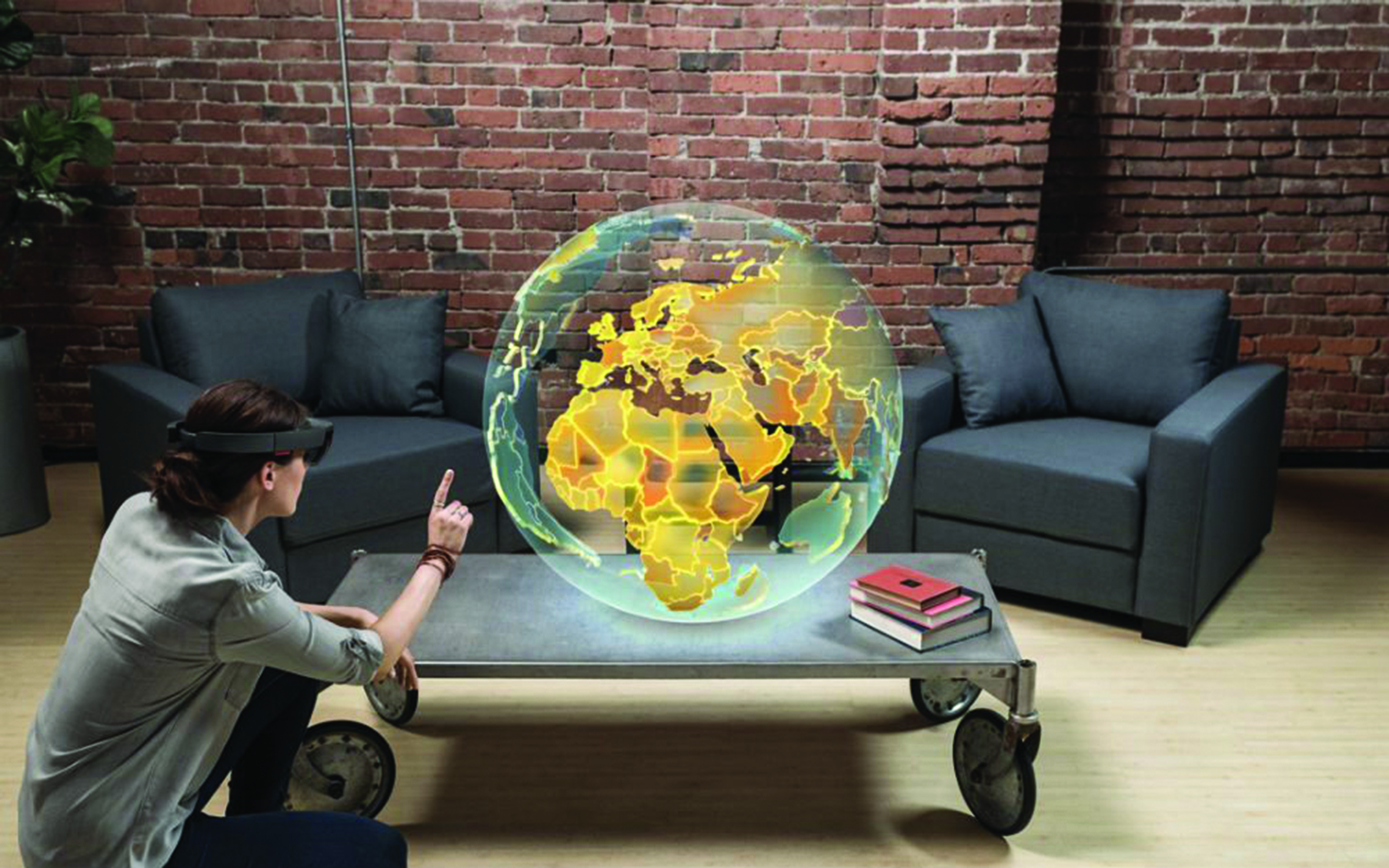Screens are so
last year
Imagine you could physically interact
with your web browser. Augmented
reality is bringing holographic
computing
to an office near you...
One of the biggest stories in tech last year was the meteoric rise of Pokemon GO. The game, developed for Android and iOS platforms by Niantic Labs, became a global phenomenon when it was released in June 2016 – so much so that users started to use VPNs and side-loading to get the game if it wasn’t available on their region’s app stores. Pokemon GO was an unqualified success, raking in a ton of cash while prompting smartphone owners to run about their neighbourhoods chasing down virtual creatures. But what it did besides all that was show proof-ofconcept of the power of Augmented Reality (AR) in a commercially driven venture. Augmented reality may not sound as sexy as some other tech concepts doing the rounds – such as virtual reality – but it’s a field a lot of tech companies are looking at investing in, with aims beyond allowing consumers to chase after cute little creatures. As recently as May this year, Apple unveiled ARKit at its World Wide Developers’ Conference (WWDC), a tool designed to allow developers to create AR applications for its iOS devices. Apple also hinted at WWDC that AR might be set to be a big feature on the iPhone 8; rumours of the tech company delving into this sector started swirling a few years ago when it acquired PrimeSense, the Israeli company that worked on gesturebased interfaces for Microsoft’s handsfree gaming controller, Kinect.
Apple isn’t alone in its forays into augmented reality. Back in April, Facebook announced customised image AR filters for its platforms at F8. While Google has shelved the Google Glass, its attempt to bring an AR wearable device to the consumer market, it announced HoloKit this year, a tool for developers wishing to bring AR features to its Google Cardboard virtual reality headset. Perhaps the best-known and most impressive development in the AR space is Microsoft’s HoloLens. The device is a ‘mixed reality headset’ that projects holograms into the user’s field of vision – ranging from Windows interface to cute characters to applications their PC is running and more – allowing users to interact with them through gestures and voice commands. Holographic computing. That’s where we are now. Imagine putting on a pair of wraparound glasses that overlays your surroundings with graphics, icons and holograms of your PC desktop and then allows you to interact with them. That’s pretty much the effect the HoloLens has when you put it on. Aside from office and web tools, Microsoft has even shown off the HoloLens in conjunction with the game Minecraft. At the E3 videogames expo in Los Angeles two years ago, audiences in the Galen Centre were wowed by the HoloLens demo in which a Microsoft employee moved holographic building blocks and towers around on a table in
front of him. The company is currently
working with partners to bring more
applications to its device ahead of
bringing it to the consumer market.
Right now, it’s only available for
partners and corporate clients.
So why are so many companies
investing in AR tech? A recent
report on TechCrunch points to the
technology’s potential in lessening
the effect automation can have on
current employment markets. As
artificial intelligence, robotics and
other developments begin to squeeze
employees out of their traditional roles,
retraining and learning new skills will
become of paramount importance for
workers – and this is where AR can help significantly. Augmented reality has the potential to be a powerful training tool; unlike more traditional learning environments, AR allows trainees to learn on the job, placing them in work situations and then issuing instructions in real time, allowing them to apply what they’re learning with immediate effect. We may be some way off this sort of training being made widely available. But, if more companies continue to invest in AR and develop tool sets and devices that can aid in the learning process, this technology could be of great benefit to those in an ever-changing job market.
